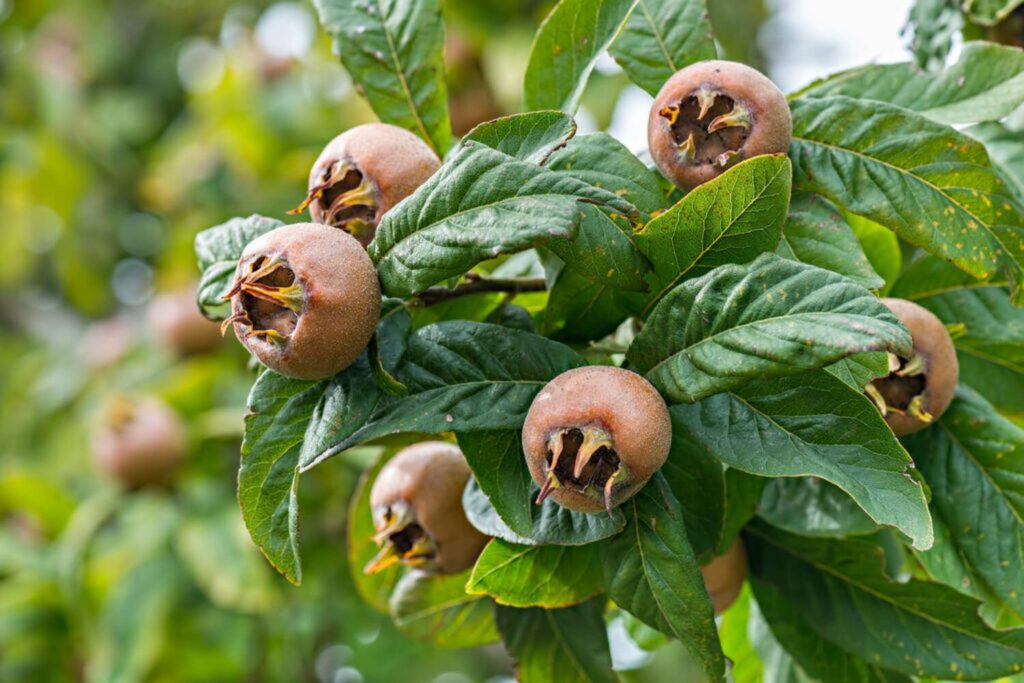As an evergreen hedge, the glossy medlar offers a natural privacy screen that is very easy to care for and tolerates pruning. In this article, we show you how to plant and care for the shrub correctly.
The glossy medlar belongs to the rose family and originates from East Asia. There it grows at an altitude of about 1,000 meters in mountain forests. There are more than sixty species of the glossy medlar worldwide – in our latitudes, the species Photinia davidana or “sparkle leaf” thrives best. As an evergreen plant, the glossy loquat retains its foliage even in winter. You can plant it singly (as a specimen) or as a hedge plant.

Planting medlar: how to do it right
Variegated-leaved varieties of the medlar grow up to three meters high and can therefore be planted well as hedges. You can buy the medlar as a potted plant in garden stores, for example. To ensure that the plant grows quickly and feels at home in your garden, you should follow a few tips when planting it:
- The right location: If you live in a region with cooler temperatures, you should plant the medlar in a location protected from the wind, as it is slightly sensitive to frost. Also, be sure to find the shrub a sunny to partial shade spot in your yard.
- The right soil: In order for the glossy medlar to thrive, the soil at its location should always be slightly moist and well-drained. It is best to loosen the soil slightly before planting and enrich it with humus.
Plant the medlar: The best time to plant the medlar is in spring or fall.
- Immerse the root ball of the medlar, including the pot, in a bucket filled with water until no more air bubbles rise.
- Then dig a planting hole that is at least twice as large as the root ball. If you want to plant the medlar as a hedge, place two to three plants next to each other per meter.
- Now pot up the medlar and place the plant in the hole. The surface of the root ball should be level with the ground.
- Enrich the excavated soil with humus before filling it back into the planting hole.
- Firmly tamp down the soil around the root ball and water the loquat generously.
Tip: Medlars can be planted not only as a hedge, but also as a specimen plant or in combination with other shrubs. The medlars look especially pretty when you mix them with jasmine or forsythia.
The right care for the glossy medlar
For a low-maintenance garden, the medlar is particularly well suited. After all, if you have planted the plant in a suitable location, it is very robust and also tolerates pruning well. The following tips will help you keep the daisy in top shape:
- Watering: The glossy medlar needs an evenly moist soil. However, you should not water it too much, as it can drop its leaves and die if it is waterlogged. Therefore, always check first with your finger whether the top layer of soil has already dried out.
- Fertilize: If you have already enriched the soil with humus when planting the medlar, the shrub usually does not need any further nutrients. However, if necessary, you can provide the medlar with some liquid fertilizer once a year in spring. It is best to use natural fertilizers such as nettle manure.
- Pruning: Planted solitarily, the medlar does not need regular pruning. If you have planted the medlar as a hedge, however, you can thin it out and cut it back every year in spring after flowering.
- Diseases and pests: To prevent your loquat from being damaged by aphids, you can spray the leaves with nettle manure as a precaution. Other pests also sometimes get at the leaves and roots of loquats. The best way to control the pests is with natural predators such as nematodes.

